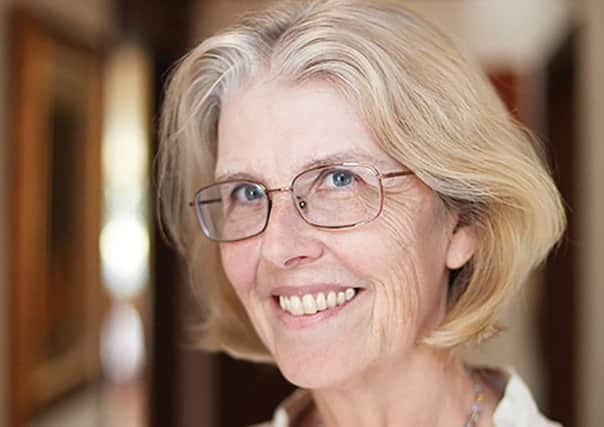Book review: Early Warning by Jane Smiley


Early Warning
by Jane Smiley
Macmillan, 476pp, £18.99
Early Warning is the middle volume of a trilogy, a family saga that began with Some Luck. It begins in 1953 with a funeral, and ends in 1986 with a widowed character discovering a grown-up illegitimate grandson, offspring of a son killed in Vietnam. Like many family sagas it’s a baggy monster. The cast-list is huge and it’s likely that most readers will find themselves flicking back to the family-tree at the front of the book in order to remind themselves who’s who. Unfortunately the family tree might itself have been better designed.
The Langdons were farming people in Iowa, German on the mother’s side, though that branch of the family plays little part in this middle novel. Some have moved, or are moving away. At the funeral the eldest son Frank, who, post-war, is in the oil industry, is taken aside by his brother-in-law Arthur, a CIA officer, and given an assignment which will take him to Iran where the CIA is preparing the coup that will topple the nationalist Prime Minister, Mossadeq. For the 33 years covered here, the private and the public are interwoven. This is after all “the American century”, but one with which a good many Americans are becoming uncomfortable. This brief episode may lead you to expect something you don’t get. Like much that happens in the novel it has no direct consequence.
Advertisement
Hide AdThere is no plot. The novel is too lifelike to have a plot; it’s just one thing after another. There are striking incidents: what may be the murder of a drunken failure, an attempted suicide, but much of what happens is low-key, ordinary, interest lying less in what happens than in what is revealed of the characters. Individuals may find their lives taking a certain shape, but the family story itself has none. Some succeed, others fail. People fall in love and out of love. Marriages wither, other married couples experience difficulty and disappointment and are strengthened by the experience. Individual stories may surprise; the general drift of the novel doesn’t. Inevitably, as in all panoramic novels with a big cast, interest is not consistently maintained. Some characters prove to be boring, but they are not the kind of fictional bores who delight. There is little wit and the humour is of the quiet and unremarkable kind. Nevertheless almost all the family and domestic scenes ring true; likewise the dramatisation of tensions within families and between generations. As a picture of Middle America over the decades it is generally convincing, if only occasionally compelling.
The family saga is yoked to public events. Most of these are predictable, perhaps unavoidably. We move from the CIA man’s despair at the Eisnehower administration’s inability or unwillingness to aid the Hungarian Rising in 1956, to the election of JFK, the Bay of Pigs and his assassination. In the Sixties we are presented with the Civil Rights movement, Vietnam and student revolt, the Nixon Presidency, then in the Seventies his opening of a dialogue with China, Watergate and his disgrace, the failure of Carter and the coming of Reagan. Less predictably – and perhaps unfortunately, some of the characters are attracted to the cult which ended in the mass Jonestown suicide in Guyana, and then in the Eighties the somewhat affected statutory gay uncle, Henry, becomes nervously aware of AIDS (though this surprisingly gives rise to one of the better comic moments). The trawl through public life in the 33 years covered in this volume is well enough done, and much of it is probably news to younger readers – even to American ones, given the decline in the standard of public education in the States. Nevertheless one wishes there were more surprising reactions to the events reported. Most of the responses are suitably civilised, respectably liberal, the idealistic daughter, for instance, rebuking and quarrelling with the father who is engaged in the armaments business.
Jane Smiley is good on places, good on weather, good on meals, all of which matter. She is good too on the silences, the things left unsaid, out of tact or for discretion’s sake, in family conversations. She has seen, remembered and imagined her characters very thoroughly, and she perceptively shows how people may change over the years, even while remaining very often essentially the same. She is good on love and desire, the cooling of love in some marriages, its strengthening in others. There is then a great deal to enjoy, and it’s a novel in which many readers will happily lose themselves. Yet at the same time there’s a certain complacency about it, a lack of edge.
It is very evidently an attempt to scale that mountain which is called the Great American Novel, a climb that has, not surprisingly, defeated everybody who has attempted it. There’s simply too much of America to be contained in a book, and, though it is possible that when the last part of the trilogy is published, the whole may seem to be more impressive than its parts, I would be surprised if the final verdict isn’t that Jane Smiley has written a generally enjoyable middlebrow novel, more remarkable for the accuracy of its portrayal of a swathe of American society than for its ability to surprise us with new insights.